True to its name, American beautyberry is certainly a beauty, and a plant – once you’ve had a sampling – you might want more of.
Gardeners love beautyberry’s large leaves, which are light green and slightly fuzzy. Its gracefully arching branches are also appealing.
But, really, it’s the plant’s late-summer or early-fall clusters of small, bright purple fruit that draws the eye and has gardeners wanting more.
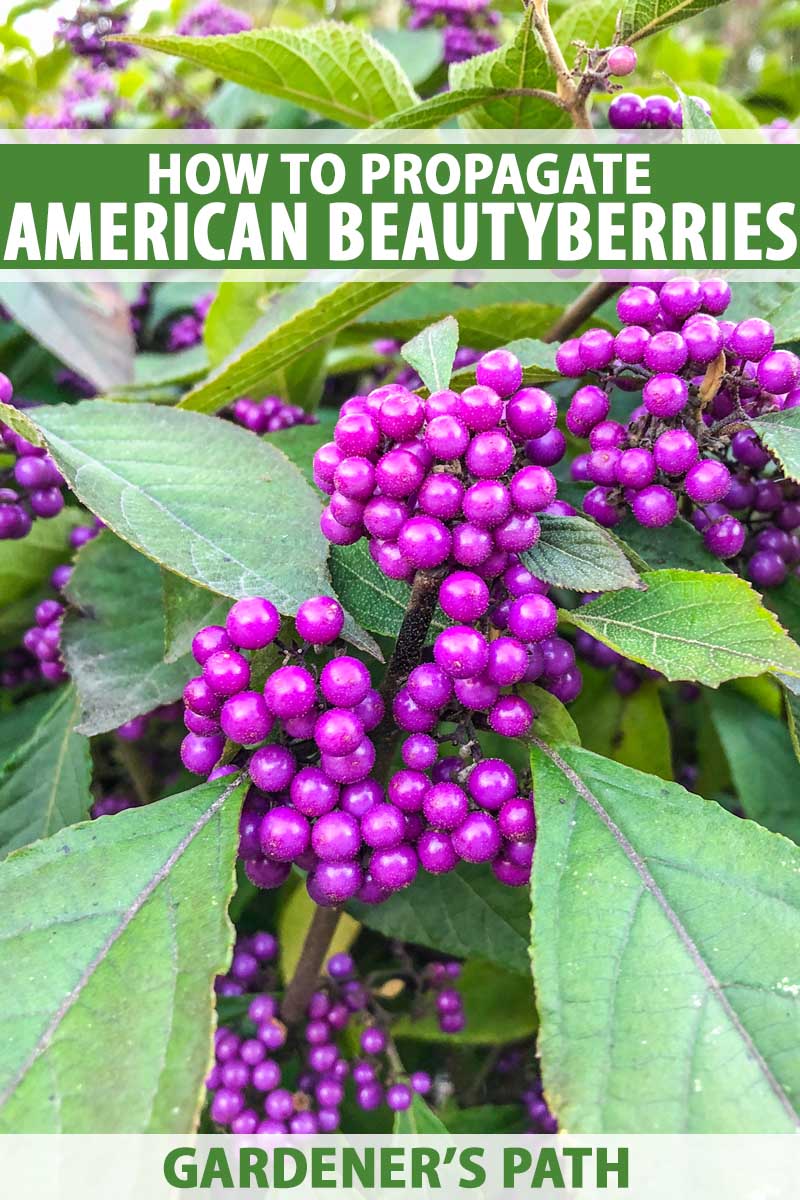
We link to vendors to help you find relevant products. If you buy from one of our links, we may earn a commission.
Fortunately, it’s an easy plant to propagate by seeds or cuttings. Let’s learn more!
Propagation from Seed
You may be able to find American beautyberry seeds at local garden centers or you can order them online.
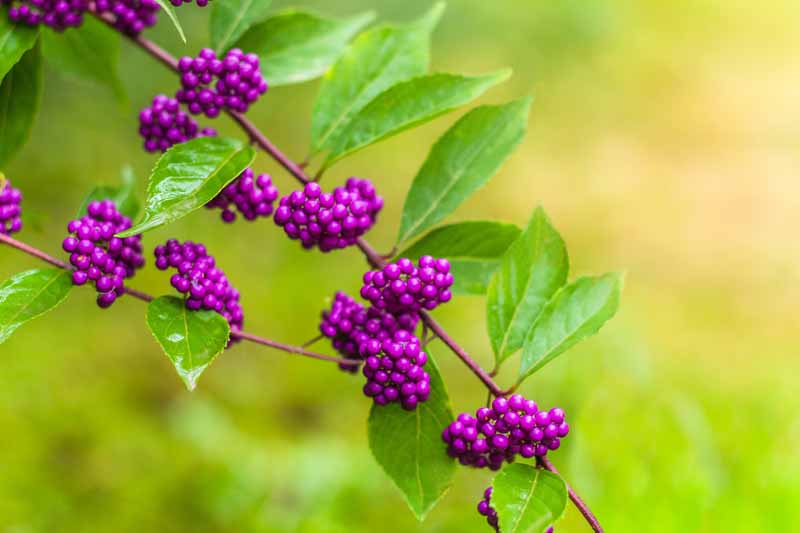
If you have a plant (or if your neighbor has a plant), you can hand-pick the mature fruit in the fall to source seeds. The berries contain two to four seeds each.
Prepare the seeds in a blender. Yup. Mix the berries with at least five times as much water and pour into a blender.
Using short bursts, run the blender at its lowest speed. This will separate the seeds from the berry tissue.
The mature seeds will sink to the bottom while immature seeds and other unnecessary bits will rise to the top. Strain out the stuff you don’t need and repeat the process a couple more times.
Drain the seeds and spread out to dry. Store in a cool, dry place.
When you’re ready to plant, place the seeds in cool, clear water and soak for 24 hours.
Sow the seeds 1/16 of an inch deep in seedling trays or small pots filled with seed-starter potting mix. Find a warm, sunny place, and put your trays there.
Lightly moisten the soil with a spray-bottle mister until the seedlings are ready to transplant, typically about three months after sowing.
Propagation from Cuttings
You can also propagate beautyberry from softwood cuttings. Softwood is a stem from the season’s new growth that is not quite brand new, but it is not old and woody, either.
In late spring or early summer, choose a healthy plant (or more) that has plenty of stems and won’t miss one or two.
Using a sharp, clean knife, cut four- to six-inch stems at a 45-degree angle. Be sure to select pieces that have two or three sets of leaves.
Fill small pots with a general soil mix and insert and remove a pencil to create a hole for the cutting.
Remove the lower leaves from your cutting, dip the cleanly cut end into powdered rooting hormone, and place it in the hole.
Gently press the soil against the stem.
Providing a “greenhouse”-type effect will help your plants stay moist. Accomplish this by putting a clear plastic bag or dome over the pots. Put your greenhouse in bright but indirect light.
Your cuttings will take six to 10 weeks to grow to transplantable size. When you see evidence of healthy growth up top, you can assume you have good rooting in the soil.
Beauty for Everyone!
As you can see from the photos, you’d be doing yourself and your neighbors a favor if you were to propagate more beautyberry for all the world to see.
Whether you choose to create more beauty from seeds or cuttings, it’s a fairly easy and quick path to more greenery, and one definitely worth taking.
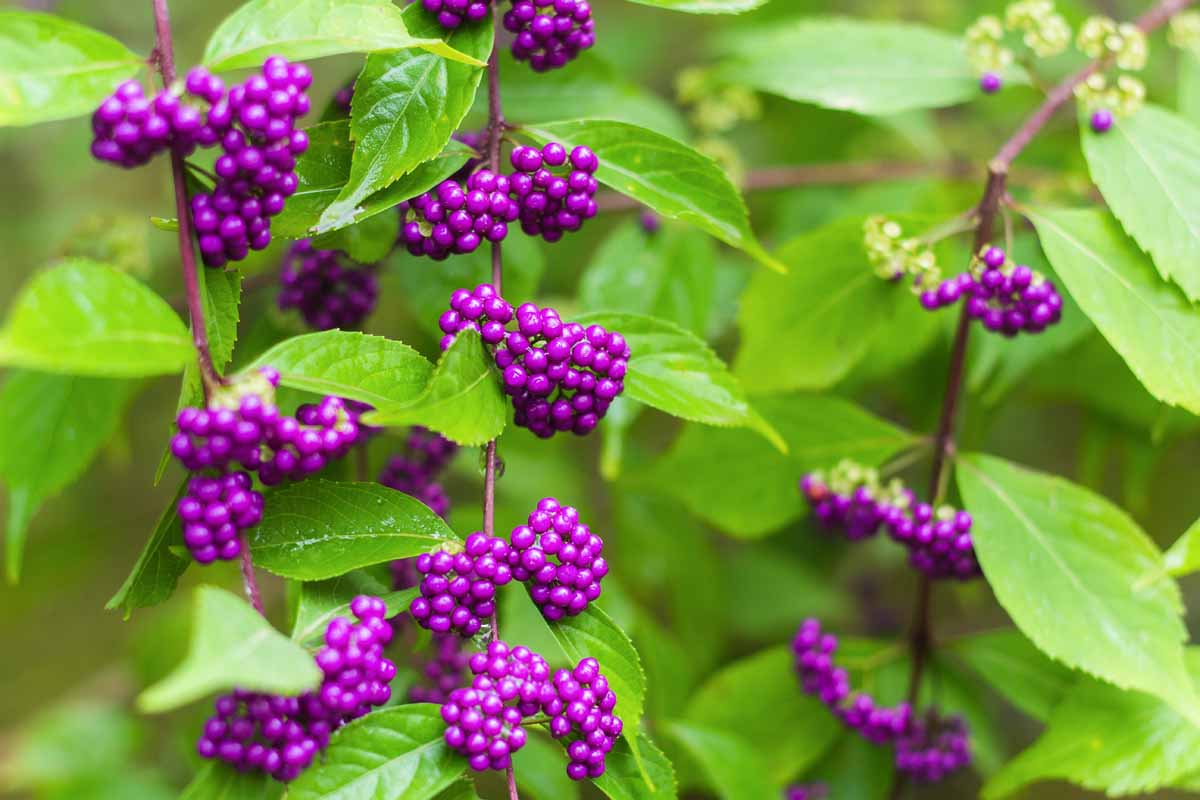
Do you grow American beautyberry? Do you want more? Tell us about it in the comments section below.
For more information on growing this pretty shrub, be sure to check out our growing guide here.
And why not check out some more of our guides to growing ornamental shrubs? Try these next:
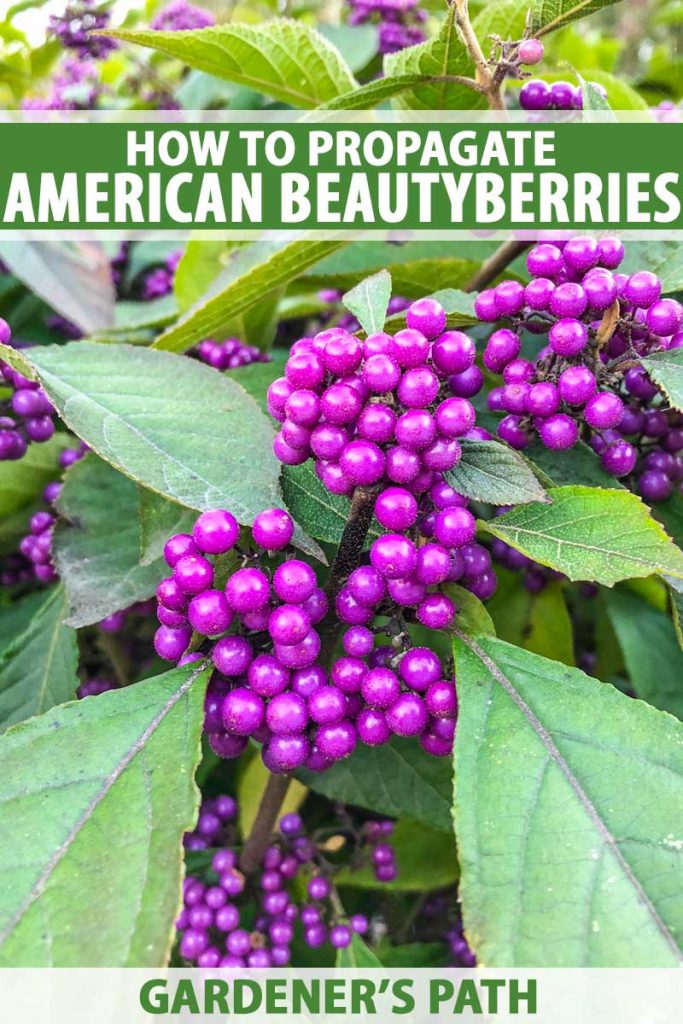
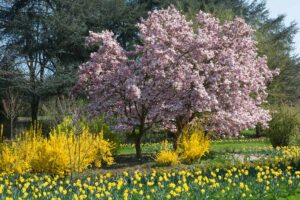
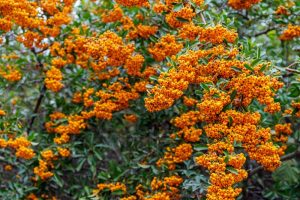

I have an American Beauty Berry that is HUGE that I transplanted from SC to GA. I have never been able to propagate by any means. This year I got a surprise. I think a bird pooped me one. Didn’t realize what it was and now it has overtaken my sidewalk near front door sidewalk. I want to move it, but unsure when and how. Help?
LOL – I think a bird-pooped tree is supposed to bring good luck, Jennifer! Transplanting should be done in the cold months of winter, Dec or Jan. They’ll be at least partly dormant then and less prone to harm from insect-spread diseases. These trees have a tap root and fibrous mat that are not extensive and mostly contained in the top 12 inches of soil. Dig out the roots along the drip line of the stems to a depth of about 14 inches, releasing the mat and taproot. Transplant promptly into a prepared hole of well-draining soil amended with organic… Read more »
Thanks for the great info! I just tried the blender technique, and it worked great!!
I’m very familiar with these plants, they are among my favorite “native” shrubs. Native is in quotes because there are also two Japanese species that grow wild here in the southeast US. The bottom two photos shown are of the Japanese species, I believe the top photo is actually the American species. The American plants look more like a mint and have larger, alternate leaves with upright branches. I prefer the Japanese type, it’s branches bend downward more like a willow or fern with smaller, opposite leaves. I made a bunch of cuttings this summer of both the American and… Read more »
I have at least four on my property that I know of. The one big ancient one is near or over the lateral and I’m going to have to prune it back a lot to dig that drain out. I’m going to try to propagate via cuttings and starting soil mixture like hydrangeas.
Hello Owner Of an old house. I realize it’s been a while, but I hope you had success with starting cuttings from your ancient beauty. Let us know how it went, if you have the time or inclination.
I’m with Greg. I think your photos depict #1 Callicarpa americana, and #s 2 and 3, Callicarpa japonica. They’re similar, but not the same. The berries of americana wrap all the the way around the stem, japonica berries sit in the axils and protrude on a small stem.
You’re right Elaine (and Greg!), the propagation methods work for both beautyberry species.
Thanks for the information.
You’re welcome Marc, thanks for reading Gardener’s Path!